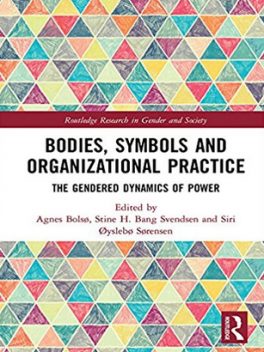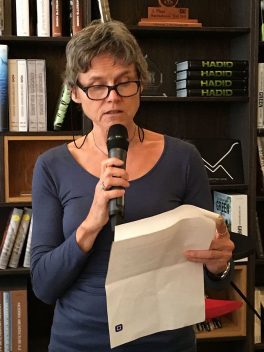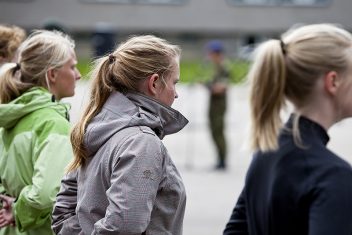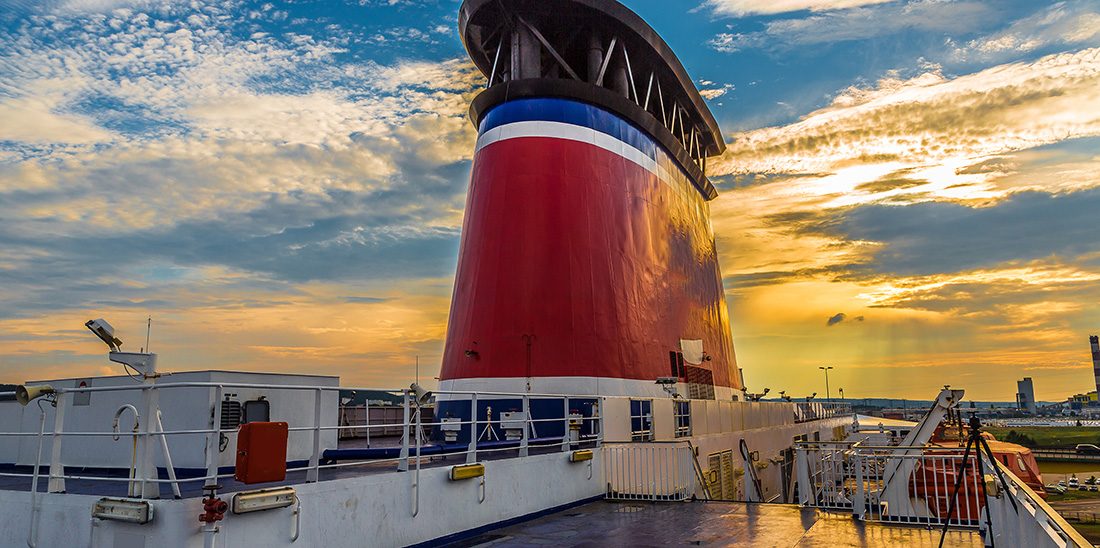Men are men and women have to watch out
Women who work on ships have to take responsibility for not being sexually harassed. This is the message according to a new book on gender, sexuality and power structures in large organizations.
WORK ENVIRONMENT ABOARD SHIPS: “Women at sea” is the title of the chapter that deals with how gender and sexuality affect the work environment in the maritime sector. This is one of the more male-dominated industries, with female employees making up only one to two per cent of the work force worldwide and ten per cent in Norway. The percentage of women in Norwegian shipping drops to less than five per cent if excluding women who work in cooking and cleaning jobs are not included in the tally.

The new book addresses how gender and sexuality affect power structures in powerful organizations within the fields of finance, oil, fashion, the maritime sector and non-profit organizations.
“The ship turns into a closed room where women seem to be pretty vulnerable,” says researcher Agnes Bolsø, one of the editors of the book Bodies, Symbols and Organizational Practice – The Gendered Dynamics of Power. Bolsø is a professor and gender researcher at NTNU’s Department of Interdisciplinary Studies of Culture.
“Women themselves carry the responsibility for the moral atmosphere. If you’re not well-suited to handle that, you aren’t well-suited to work on a boat,” says Bolsø.
- You might also like: All forms of sexual harassment can cause psychological harm
Should be a management responsibility
Researchers conducted extensive interviews of 15 female and male ship employees. According to the men, having women on board can cause turmoil because they tend to want to have a relationship with one man, and the other men sometimes get jealous. The women relate how they always take precautions to avoid sexual attention from their male colleagues.

“We did our best to ask questions that were a little different than what’s usually asked in social science research,” says Agnes Bolsø. (Picture is from a different context.) Photo: Kjersti Lie
“I’ve never undressed to less than shorts and a t-shirt. I’ve been working on ships with a pool for four years, but I’ve never used it,” says one of the women interviewed.
Women in a strongly male-dominated environment receive a lot of attention from male colleagues, which can be difficult, especially for young women, says Bolsø.
“Men are allowed to be men. Everyone in the industry understands that when men have been aboard ship for weeks at a time, not much is holding them back. And this isn’t seen as the men’s responsibility. Management in the maritime sector should bear the responsibility for addressing the issue,” she says.
“Women are put in a position that affects their ability to be seen as authoritative. When they constantly become an object for men, and these men are constantly testing the waters, it’s not easy to build authority at the same time. And if #metoo has shown us anything, it’s that this is also true in contexts beyond the maritime sector,” Bolsø adds.
- You might also like: A preference for casual sex increases risk of harassment
Humanistic look at large organizations
Bodies, Symbols and Organizational Practice was launched in late January. The starting point for the book was to try to bring perspectives from the humanities to research on organizations and power structures, which until now has been dominated by social scientists.
“We used perspectives from the humanities to address the more subtle structures around power. We did our best to ask questions that were a little different from what’s usually asked in social science research,” Bolsø says.
The researchers posed questions about sexuality, desire, authority, and aesthetics. Several of the studies used image analysis to show how women and men are presented differently within the same industry.
From action to everyday life in the Norwegian Armed Forces
Co-editor Stine Helena Bang Svendsen looked at how the Norwegian Armed Forces have changed the imagery in their recruitment videos after national service was opened to both sexes.
“The action film moments that were evident in the old material have disappeared. Life in the Armed Forces is no longer presented as exciting warfare.
Svendsen says that it is now presented as much more down to earth and routine.
“You could go so far as to say that they’ve traded soldiers who run around in the forest for soldiers who clean indoors,” she says.
And the main character in the videos now tends to be a beautiful young woman.
“A woman that girls can imagine themselves becoming and young men can lust after,” says Svendsen, who is an associate professor and gender researcher at NTNU’s Department of Teacher Education.
Subtly present everywhere

The Norwegian Armed Forces have changed the imagery in their recruitment videos after the national service was opened to both sexes. Illustrative photo: Peder Torp Mathisen / Norwegian Armed Forces
“The good thing about this book is that it shows how much gender is part of the dynamics of power and power play in all organizations. It also shows how difficult it is to escape the power games and how subtly they weave through everyday practices in everything we do,” says Siri Øyslebø Sørensen. She is the book ‘s third editor and an associate professor and gender researcher at the NTNU’s Department of Interdisciplinary Studies.
“Gender affects everything we do, from attaining leadership roles, to our career, even to finding our place in an organization. This power is normal, commonplace and woven into ordinary practices and beliefs about organizations.
Sørensen emphasizes that this isn’t necessarily wrong, but that it can explain how and why some gender biases are upheld and why it has been so difficult to talk about the issue.
#metoo
Until now, that is. At the moment people are talking about it all the time. In the wake of the #metoo campaign, the field that gender researchers have studied for years has become the hot topic in the media and at the lunch table. Bolsø agrees that the timing for the book is good.
“It turned out that way. We didn’t predict this when we started the project five years ago,” she says.
Stine Helena Bang Svendsen believes the book will be useful as background material for organizations and others who want to change old power structures.
“In the current discussion about sexual harassment and gender equality, it’s important that people can base their discussions on research-based knowledge. Qualitative studies that give insight into the problem are a critical part of this,” she says.
Several examples in the book show that there’s a long way to go. And the researchers saw no signs that the power structures in the maritime sector are looking toward imminent changes.
“We found that the leadership wasn’t talking about this at all. How gender and sexuality affect the power structures in the work environment wasn’t discussed at meetings in the organization,” says Bolsø.







